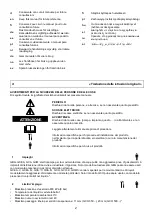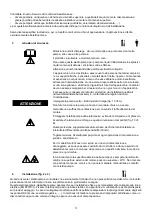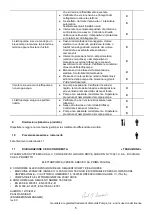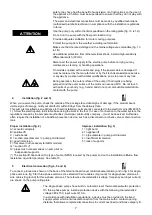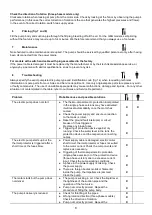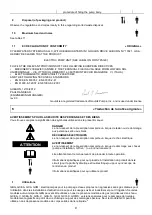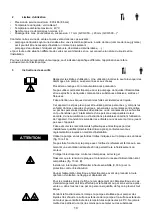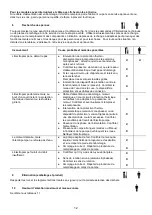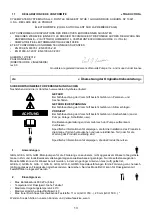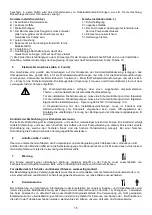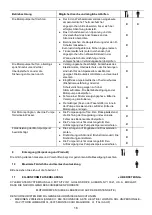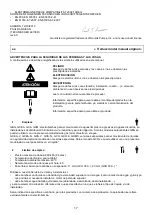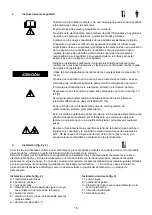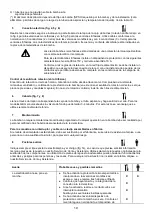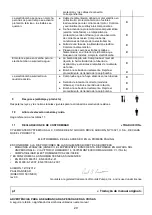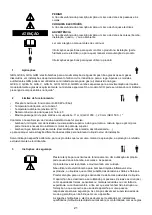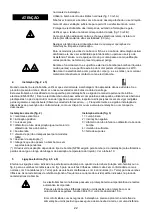
8
Check the direction of rotation (three-phase models only)
Clockwise rotation when looking at pump from the motor side.
Check by looking at the fan or by observing the pump’s
performance (in this case the correct direction of rotation is the one that generates the highest pressures and flows).
In the event of incorrect rotation, switch two supply wires.
6
Priming (fig. 7 and 8)
Fill the pump body and suction pipe through the fill plug, bleeding off all the air. For the GBG models, self-priming
without the foot valve may require up to 3-4 minutes. We therefore recommend that you always use a foot valve.
7
Maintenance
No scheduled routine maintenance is required. The pump should be serviced by qualified personnel only, after having
been disconnected from the power mains.
For models with switch and cable with plug assembled in the factory
If the power cable is damaged it must be replaced by the manufacturer or by their technical assistance service, or
anyway by a person with similar qualifications, so as to prevent any risk.
8
Troubleshooting
Always specify the exact pump/electric pump type and identification code (fig. 14) when requesting technical
information or spare parts from our Sales and Service department. Use only original spare parts to replace any worn
or faulty components. The use of unsuitable spare parts may cause malfunctions, damage and injuries. For any other
situation not contemplated in the table, refer to our Sales and Service Department.
Problem
Probable cause and possible solutions
The electric pump does not start.
● The thermo-amperometric protection incorporated
in the single-phase versions may have activated:
it will reset automatically once the motor has
cooled.
X
X
● Check the power supply and ensure connection
to the mains is intact.
X
● Reset the ground fault interrupter or circuit
breaker if it has triggered.
Replace any blown fuses.
X
● Triggering of protection device against dry
running. Check the water level in the tank, the
protection device and the respective connecting
cables.
X
The electric pump starts up but the
thermal protector is triggered after a
short time or the fuses blow.
● Power supply cable is damaged, electric motor
short circuit, thermal protector or fuses not suited
to the motor current Check the components and
replace as necessary.
X
● Triggering of thermoamperometric protection
(single-phase version) or of the protection device
(three-phase version) due to excessive current
input. Check the pump working conditions.
X
● A phase in the power supply is missing. Check
the power supply
X
● There are foreign bodies (solids or filaments)
inside the pump, the impellers are jammed.
Clean the pump.
X
The motor starts but the pump does
not deliver.
● The pump is sucking in air. Check the liquid level,
the tightness of the suction pipe and the
operation of the foot valve..
X
● Pump not correctly primed. Repeat the
procedure of filling the pump body.
X
The pump’s delivery is reduced.
● Check for throttling of the pipes.
X
● Wrong rotation direction (three-phase models).
Check the direction of rotation.
X
● Pump not correctly primed. Repeat the
X


